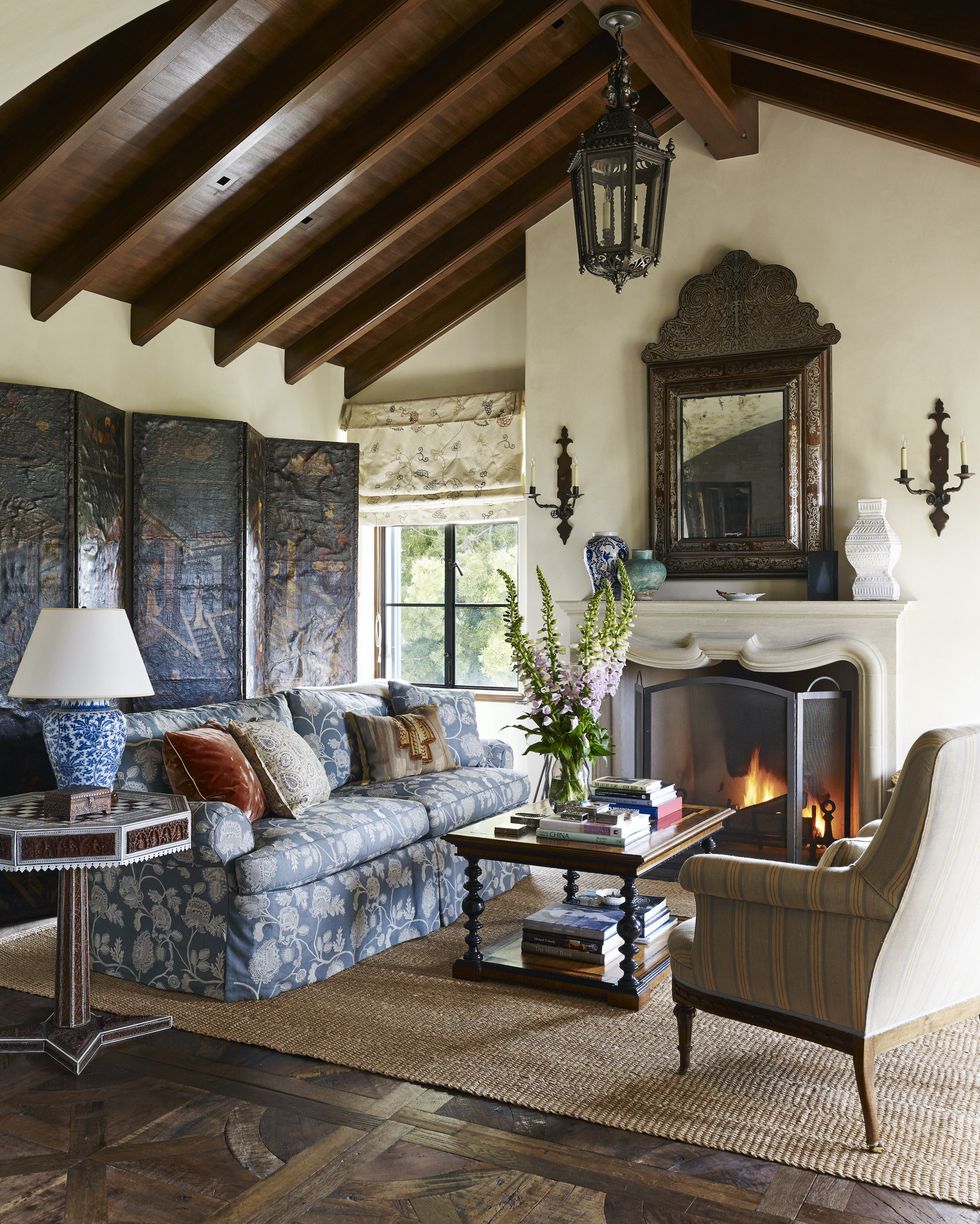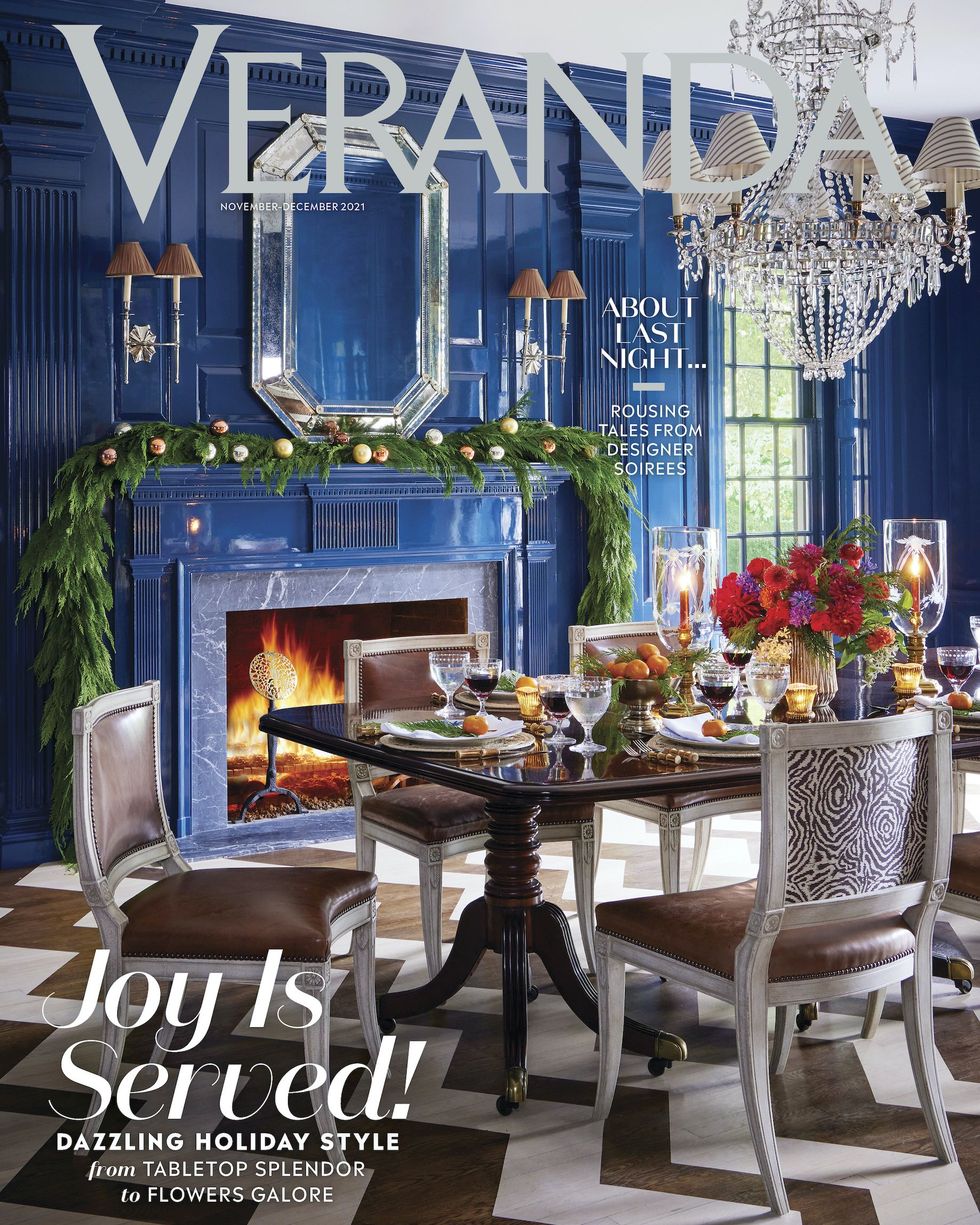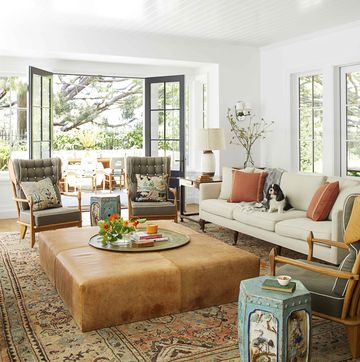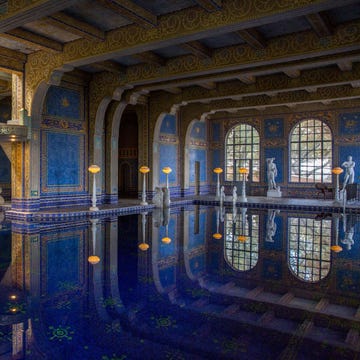At its least glamorous, the folding screen is the Band-Aid of the decorative arts: a temporary fix that conceals and helps heal the results of a blunder. Just think of Jane Fonda and Robert Redford’s comically awful walk-up in Barefoot in the Park (1967), rendered almost respectable by a louvered screen splayed across the apartment’s outdated, exposed-to-view kitchenette. Divorce? Averted.
The classic rom-com had the right idea. As mobile architecture, folding screens can instantly transform any space, offering ad hoc privacy, obscuring unsightly views and outdated features, or dividing an open-plan desert into room-like zones that are both functional and claustrophobia-free. But behind the workhorse facade is a decorative staple that first appeared in ancient China during the Han Dynasty (206 B.C.–220 A.D.). Hinged wooden panels lacquered to the hilt by highly skilled artisans, early folding screens were a smash, spreading through Asia (notably to Japan and Korea) and reaching a zenith of popularity during China’s Tang Dynasty (618–906 A.D.). As their cultural importance increased, folding screens were produced in ever-finer materials, such as paper and silk, doubling as displays for elaborate paintings and calligraphy. During the Song Dynasty (960–1279 A.D.), connoisseurs preferred landscapes, but screen-filled scenes of palace life—and even erotic verse—adorned folding screens from at least Tang times onward, reflecting their association with mystery, intrigue, courtship, and concealment. In “Song: the Screen,” bad-boy poet Li He (790–816 A.D.) detailed the 12-paneled screen enclosing a newlywed couple’s bed. Decorated with butterflies alighted on China pinks (an allusion to lovemaking), the PG-13 screen was not for the faint of heart.
It’s no wonder Europeans were intrigued. They liked curiously peeking maidens and clandestine encounters too. They were also keen on keeping out drafts. After wending their way to Europe during the Middle Ages, Chinese folding screens exploded in popularity toward the close of the 17th century. Like black pepper and chintz, screens became a valuable commodity in the increasingly interconnected global economy, and the inaccurate names they went by—Coromandel or Bantam screens, after key trading ports—reflect a typical colonial haziness (and laziness) around geography and the cultural origins of imports.
More From Veranda

The incised-color lacquer technique of Coromandel screens was developed in the late Ming Dynasty (1368–1644 A.D.), just before production for Western markets peaked. So, like a faded pop star, Westerners remember Chinese folding screens at the apotheosis of their popularity, and when you daydream about them, you’re likely to conjure “Coromandel”: black, cinnamon, or deep green lacquer panels incised with courtly scenes and landscapes in gold and other rich hues and inlaid, at their most luxurious, with semiprecious materials such as mother-of-pearl and ivory.
With the 18th-century rise of imported wallpapers and tapestries, the Western craze for Coromandel panels waned, but the look of lacquerware was here to stay, as was the functionality of the folding screen. In the 2020 adaptation of Jane Austen’s Emma, Mr. Woodhouse sits inside a fort of folding screens constructed to keep colds at bay (an accurate depiction), and Marie Antoinette’s Versailles was chockablock with screens zigging and zagging this way and that.
While the Aesthetic Movement ushered in a folding-screen revival in the 1870s, fashion is fickle. In The Edwardians, set between 1905 and 1910, Vita Sackville-West describes a Coromandel screen in a room that is “impersonal, conventional, correct” (low praise coming from the freethinking girlfriend of Virginia Woolf). By the time Coco Chanel fell in love with Coromandel screens at the age of 18, they were once again rife for revival.
Folding screens have been permanently popular ever since. From Syrie Maugham to Michael S. Smith, top designers have turned to screens in every shape and material imaginable, and not just because they’re Band-Aids. Says Smith, “Folding screens perform a seemingly impossible feat, lending both movement and an air of permanence to rooms.” For this reason, Smith has more than once arrayed his favorite form of “flexible architecture” behind a sofa or bed, bringing dynamism to what would otherwise be a flat plane. In the Obama White House, he deployed Adelphi wallpaper-wrapped screens in Sasha and Malia’s bedrooms, reducing their scale to child-friendly proportions. “Screens can both create space or reduce space,” he says. “It’s magical.”
Smith also likes to display folding screens flat on the wall as art—which they are. “They work in a variety of applications, and the price of an extraordinarily fine screen is so much less than buying a work of fine art of the same quality.”
What about their sense of mystery? Smith’s voice lowers. “A folding screen is the curtain in a game show. It’s the proscenium.” He pauses thoughtfully before asking the question that every folding screen provokes: “What’s behind there?”
It’s a question without an answer, and likely the key to the folding screen’s enduring appeal.
The article originally appeared in the November/December 2021 issue of VERANDA. Produced by Sara Clark; written by Michael Diaz-Griffith.
























